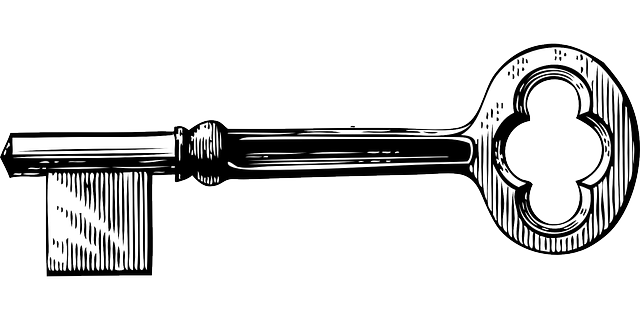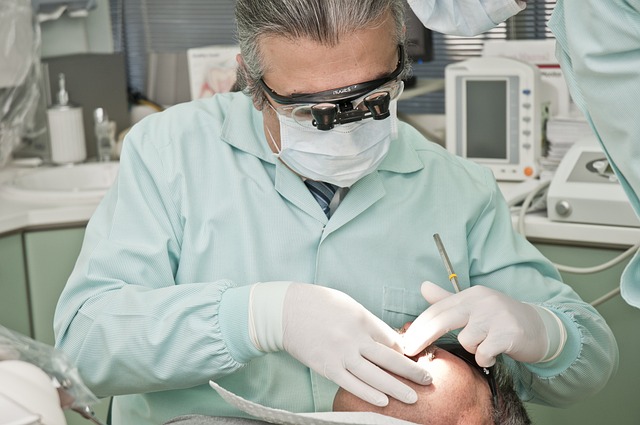Unlocking the Potential: Can Invisalign Ease Clenching?
Welcome to our informative article exploring the potential of Invisalign to help alleviate clenching. Are you tired of waking up with sore jaw muscles or headaches caused by teeth grinding while you sleep? Invisalign, known for its discreet aligner trays, might just be the solution you have been searching for. Join us as we delve into the fascinating world of orthodontics and discover how this innovative treatment option can not only straighten your teeth but also relieve the discomfort caused by clenching and grinding. So, sit back, relax, and let’s unlock the potential of Invisalign together!
1. Understanding the Connection: Exploring the Link between Invisalign and Clenching
Many people who suffer from clenching or grinding of their teeth, also known as bruxism, may wonder if Invisalign treatment can help alleviate this issue. While Invisalign aligners are primarily designed to straighten teeth and correct bite misalignments, they can indirectly have a positive impact on clenching habits.
One of the main reasons clenching occurs is due to an improper bite alignment. When the teeth do not fit together correctly, the jaw may subconsciously clench in an attempt to find a more comfortable position. Invisalign, with its custom-made clear aligners, works by gradually shifting the teeth into their ideal positions, correcting any misalignments. This not only improves the appearance of the smile but also ensures a proper bite alignment, reducing the incidence of clenching in many cases.
- While Invisalign can indirectly help with clenching, it is important to note that it may not completely eliminate the condition for everyone. It is always recommended to consult with a dental professional to determine the best treatment options for addressing bruxism.
- In some cases, dentists may recommend additional measures to manage clenching, such as using a nightguard or practicing relaxation techniques.
- It is also important to note that Invisalign treatment requires wearing the aligners for at least 20-22 hours a day, which means it may not be suitable for individuals who habitually clench or grind their teeth during the day.
In conclusion, while Invisalign is primarily focused on straightening teeth, it can indirectly have a positive impact on clenching or grinding habits by improving the bite alignment. However, it is crucial to consult with a dental professional to determine the most suitable treatment plan for addressing bruxism and to explore any additional measures that may be necessary for managing this condition.

2. A Surprising Solution: How Invisalign Might Help Ease Clenching Problems
Are you one of the many individuals who suffer from clenching problems? If so, you might be surprised to learn that Invisalign, a renowned orthodontic treatment, could potentially help alleviate this issue. Invisalign, known for its ability to straighten teeth discreetly, has been found to provide additional benefits beyond just improving the appearance of your smile.
Invisalign works by using a series of clear aligners to gradually move your teeth into their desired positions. These aligners are custom-made to fit your teeth comfortably, ensuring a snug and secure fit. What makes Invisalign unique in relation to clenching problems is that it helps create a proper bite alignment and distribute biting forces evenly, reducing the strain on your jaw muscles.
Furthermore, Invisalign aligners act as a protective barrier, preventing your teeth from grinding against each other while you sleep. This can significantly reduce the wear and tear on your teeth caused by clenching or grinding, helping to preserve their strength and integrity. Additionally, using Invisalign aligners can help promote a relaxed jaw position, leading to decreased muscle tension and potentially easing the discomfort associated with clenching.
If you’re experiencing clenching problems and are considering Invisalign, it’s essential to consult with an experienced orthodontist who specializes in this treatment. They will evaluate your specific jaw alignment and dental condition to determine whether Invisalign is a suitable option for you. Remember, addressing clenching issues not only enhances your oral health but also contributes to your overall well-being.

3. Unveiling the Science: The Mechanism behind Invisalign’s Clenching Relief
One of the remarkable features of Invisalign treatment is its ability to provide relief for clenching, a common issue among patients. By understanding the science behind it, we can appreciate how this mechanism works.
Firstly, Invisalign aligners are designed to fit snugly over your teeth. This custom-fit is essential in enabling the aligners to apply gentle, consistent force to gradually move your teeth into their desired positions. However, this force not only helps straighten your teeth but also has a therapeutic effect on clenching. The aligners create a slight separation between your upper and lower teeth, promoting muscle relaxation and reducing the inclination to clench. This separation acts as a physical barrier that prevents your teeth from fully engaging, nipping clenching in the bud.

4. Breaking the Clenching Habit: Can Invisalign Unlock the Potential?
Invisalign has revolutionized the way we treat misaligned teeth, eliminating the need for traditional braces. One common issue that many people face is clenching their teeth, which can lead to various dental problems. The good news is that Invisalign can help break the clenching habit and unlock your smile’s potential!
How does Invisalign achieve this? Here are a few key ways:
- Custom-made aligners: Invisalign treatment involves using a series of custom-made clear aligners that snugly fit over your teeth. These aligners are designed to promote a relaxed jaw position and discourage habitual teeth clenching.
- Gentle realignment: As you progress through your Invisalign treatment, your teeth will gradually shift into their proper positions. This alleviates any crowding or misalignment, helping to reduce the underlying causes of clenching.
- Comfortable fit: Unlike traditional braces with metal brackets and wires, Invisalign aligners are made from smooth plastic material that fits comfortably in your mouth. The absence of metal can make it easier to break the clenching habit, as there are no irritating elements to trigger this behavior.
With the help of Invisalign, you don’t have to live with the clenching habit any longer. Not only will your teeth become properly aligned, but you’ll also reap the benefits of a more relaxed jaw and a confident smile!

5. How Invisalign Aligners Could Provide Relief from Clenching and Grinding
Invisalign aligners are known for their ability to straighten teeth and give you a beautiful smile. But did you know that they can also provide relief from clenching and grinding? Whether you’re a known teeth grinder or suspect you may be clenching your teeth during the day or at night, Invisalign aligners could be the solution you’ve been looking for.
One of the main causes of teeth grinding, also known as bruxism, is misaligned teeth. When your teeth don’t fit together properly, it can lead to an excessive amount of pressure being placed on certain teeth, causing them to grind or clench against each other. Invisalign aligners work by gradually shifting your teeth into their proper alignment, which can provide relief from this excessive pressure and alleviate the grinding and clenching. The aligners are custom-made to fit your teeth snugly, acting as a protective barrier between your upper and lower teeth, preventing them from grinding against each other.
- Comfortable: Invisalign aligners are made from smooth, BPA-free plastic, making them comfortable to wear throughout the day and night. Unlike traditional braces, there are no brackets or wires to irritate your gums or cheeks.
- Convenient: The aligners are easily removable, allowing you to enjoy your favorite foods without any restrictions. Simply take them out when you eat or drink, and pop them back in afterward.
- Effective: Invisalign aligners have been proven to effectively treat misaligned teeth and provide relief from clenching and grinding. With regular wear and replacement of the aligners as directed by your dentist, you can expect to see significant improvement.
If you’re experiencing symptoms of teeth grinding or clenching, consult with your dentist to see if Invisalign aligners are a suitable option for you. Not only can they give you a straighter smile, but they may also provide the relief you need from the discomfort and potential damage caused by grinding and clenching.
6. Empowering Smiles: The Role of Invisalign in Relieving Clenching Discomfort
Invisalign, known for its teeth-straightening capabilities, has proven to be more than just a cosmetic orthodontic treatment. For those suffering from clenching discomfort, Invisalign can play a pivotal role in relieving the discomfort and empowering smiles. Here’s how Invisalign helps alleviate clenching and its associated challenges:
- Improved tooth alignment: Invisalign aligners gradually move teeth into their proper positions, helping to correct misalignment. This helps alleviate clenching discomfort by distributing the bite forces more evenly, reducing strain on certain teeth.
- Bite optimization: Invisalign treatment aims to achieve an ideal bite, where the upper and lower teeth fit together harmoniously. By correcting any bite discrepancies, Invisalign can relieve the stress placed on teeth, jaw joints, and muscles, reducing clenching-related discomfort.
- Reduced muscle tension: Through Invisalign’s orthodontic adjustments, the muscles involved in clenching can experience relief. Straightening misaligned teeth can ease muscle tension, minimizing clenching symptoms like jaw pain and headaches.
In addition to tackling clenching symptoms, Invisalign offers a range of benefits that contribute to overall oral health and confidence. The aligners are virtually invisible, providing a discreet alternative to traditional braces, while their removable nature allows for easy maintenance of oral hygiene. By opting for Invisalign, individuals can improve their smiles, enhance their comfort, and regain control over their oral health.
7. Putting an End to Jaw Tension: The Benefits of Invisalign for Clenching Sufferers
Jaw tension and teeth clenching can be painful and uncomfortable, affecting your overall oral health and quality of life. But fret not, as there is a solution that can help put an end to your jaw tension woes: Invisalign! This revolutionary orthodontic treatment not only straightens your teeth but also offers several benefits for those who suffer from clenching.
Here are some ways Invisalign can improve the jaw tension:
- Alignment: Invisalign aligners gradually shift your teeth into their correct positions, ensuring your bite is properly aligned. This aligning effect can help alleviate jaw tension and reduce teeth clenching.
- <b.Safety and Comfort: Invisalign aligners are made from smooth, BPA-free plastic, providing maximum comfort while wearing them. Unlike traditional braces, these clear aligners have no sharp metal components that can irritate your jaw or gums, offering a more comfortable experience for clenching sufferers.
- Customization: Each set of Invisalign aligners is custom-made for your specific needs. This personalized approach allows the aligners to target your unique jaw alignment issues, helping to relieve tension and reduce clenching.
By opting for Invisalign, you not only achieve a straighter smile but also take a step towards ending your jaw tension and clenching problems. Consult with your dentist or orthodontist today to explore whether Invisalign is a suitable solution for you.
8. Finding Relief in Invisible Braces: Exploring the Clenching-Reducing Power of Invisalign
Invisalign, the revolutionary invisible braces, not only helps straighten your teeth, but it also offers a surprising added benefit – reducing clenching. Many individuals suffer from teeth clenching or grinding, known as bruxism, which often leads to excessive wear, jaw pain, and even headaches. Invisalign has shown great success in alleviating these symptoms by providing a comfortable and effective solution.
The unique design of Invisalign aligners incorporates features that encourage relaxed jaw muscles, helping minimize clenching. The trays are custom-made to fit your mouth, and they gently guide your teeth into their desired positions. As a result, they create a balanced bite and reduce the strain on your jaw, providing relief from the constant clenching that can cause discomfort. In addition to its clenching-reducing power, Invisalign offers a discreet and convenient orthodontic treatment that allows you to maintain your regular diet and oral hygiene routine.
- No more bulky, uncomfortable traditional braces!
- No restrictions on the foods you can enjoy.
- Brush and floss like you normally would.
- Continue playing your favorite sports without worrying about mouth injuries from metal braces.
Experience the benefits of an aligned smile while finding relief from clenching with Invisalign. Don’t let teeth grinding continue to disrupt your life. Schedule a consultation with a certified Invisalign provider today and take your first step towards a healthier, more comfortable smile.
9. Unleashing the Potential: How Invisalign Aligners Can Ease Clenching Troubles
Many people experience clenching troubles, which can lead to various dental issues and discomfort. Fortunately, Invisalign aligners can be an effective solution for easing clenching problems. These clear aligners are not only renowned for straightening teeth, but also for providing relief from clenching and teeth grinding.
One of the primary ways Invisalign aligners mitigate clenching troubles is by creating a barrier between your upper and lower teeth. This barrier prevents the teeth from grinding against each other, reducing the pressure and strain on your jaw joint and muscles. As a result, you may find that the frequency and severity of clenching are significantly reduced over time. In addition to easing clenching troubles, Invisalign aligners also correct any misaligned teeth, improving your bite and overall dental health.
- The comfortable, custom-made aligners fit snugly over your teeth, ensuring a comfortable and secure fit while also helping alleviate clenching.
- Unlike traditional braces, Invisalign aligners are removable, allowing you to take them out when necessary, such as during meals or important events.
If you’ve been dealing with clenching troubles and are seeking a non-invasive, convenient solution, Invisalign aligners could be the ideal choice for you. Schedule a consultation with your dentist or orthodontist to explore how Invisalign aligners can help unleash your true potential and provide relief from clenching troubles.
10. From Alignment to Comfort: Uncovering the Hidden Benefits of Invisalign for Clenching
Invisalign, the clear aligner system known for straightening teeth, has a surprising hidden benefit: it can help alleviate clenching and grinding habits. Clenching, also known as bruxism, can cause a variety of dental problems, including worn down enamel, jaw pain, and even headaches. Thankfully, Invisalign can offer a solution to this common issue.
One of the key ways Invisalign helps with clenching is by creating a more comfortable alignment for your teeth. The aligners are custom-made to fit your teeth, gently shifting them into the desired position over time. As your teeth align, your jaw is also encouraged to settle into a more relaxed position, reducing the urge to clench or grind. Additionally, the aligners act as a protective barrier, preventing direct contact between your upper and lower teeth, which can further alleviate tension and reduce clenching. With Invisalign, you can not only achieve a beautiful, straight smile, but also improve your overall comfort and oral health along the way.
Frequently Asked Questions
Q: What is Invisalign?
A: Invisalign is a popular orthodontic treatment that uses clear aligners to straighten teeth and correct various dental issues.
Q: What does it mean to clench your teeth?
A: Teeth clenching, also known as bruxism, is the involuntary grinding or clenching of teeth during sleep or stressful situations. This can cause jaw discomfort, headaches, and other dental problems over time.
Q: Can Invisalign help ease teeth clenching?
A: Yes, recent studies suggest that Invisalign treatment may help reduce teeth clenching and its associated symptoms.
Q: How does Invisalign alleviate teeth clenching?
A: Invisalign aligners are designed to fit perfectly over your teeth, creating a cushioning effect that can reduce the impact of clenching or grinding. By providing a barrier between the upper and lower teeth, Invisalign aligners help minimize the strain on your jaw joints and teeth.
Q: Are there any other benefits to using Invisalign for teeth clenching?
A: Absolutely! Besides potentially reducing teeth clenching, Invisalign also offers the added advantage of straightening misaligned teeth and improving your overall oral health. It can resolve bite issues, gaps, and overcrowding, improving your smile aesthetics and confidence.
Q: Is Invisalign treatment suitable for everyone with teeth clenching?
A: Invisalign can be an effective solution for many people with teeth clenching. However, it is best to consult with a dental professional or an Invisalign provider who can assess your specific situation and determine if Invisalign is the right treatment option for you.
Q: How long does Invisalign treatment usually take?
A: The duration of Invisalign treatment can vary depending on the complexity of the dental case. On average, treatment can last between 12 to 18 months, but some simpler cases can be completed in as little as six months.
Q: Are there any downsides or limitations to using Invisalign for teeth clenching?
A: Invisalign may not be suitable for severe cases of bruxism. Additionally, some individuals may require additional appliances or therapies to fully address their teeth clenching issues. It is important to consult with a dental professional to determine if Invisalign is the right treatment option for you.
Q: Is Invisalign covered by dental insurance?
A: In some cases, dental insurance may cover a portion of the cost of Invisalign treatment. However, coverage may vary based on your dental insurance plan. It is advisable to contact your insurance provider to verify your coverage.
Q: How can I find a dental professional who offers Invisalign treatment?
A: You can visit the official Invisalign website (www.invisalign.com) and use their “Find an Invisalign Provider” search tool. This will help you locate a dental professional in your area who offers Invisalign treatment.
Remember, always consult with a dental professional to determine the best course of action for addressing your teeth clenching concerns. Invisalign treatment may be a suitable option, but a dental expert can provide personalized advice based on your specific needs.
Conclusion
In conclusion, it is evident that Invisalign holds great promise in easing clenching and unlocking your true potential for a healthier, more aligned smile. This revolutionary orthodontic treatment offers a discreet and comfortable option for those suffering from teeth grinding and jaw tension. With its innovative technology and customizable aligners, Invisalign provides a gentle, yet effective solution that traditional braces cannot match. By addressing the underlying causes of clenching, such as misaligned teeth and malocclusion, Invisalign not only enhances your oral health but also improves your overall well-being.
As we have explored throughout this article, the benefits of Invisalign extend beyond just straightening teeth. From reducing tooth wear and jaw pain to alleviating headaches and improving your confidence, Invisalign can truly transform your life. It offers a convenient and virtually invisible alternative, allowing you to smile confidently throughout your treatment journey.
While not a cure for clenching, Invisalign’s effectiveness in reducing the severity of symptoms has been well-documented. By properly aligning your teeth and gently guiding your bite, these clear aligners can help break the cycle of clenching, providing you with a long-lasting solution that promotes proper dental function.
If you are struggling with teeth grinding or jaw clenching, consulting with a qualified orthodontist can help determine if Invisalign is the right option for you. Remember, addressing these issues early on can prevent further complications in the future, such as enamel erosion and chronic pain. So, take the first step towards a healthier smile and unlock your potential with Invisalign today.
With Invisalign, you can confidently conquer clenching, knowing that you are embarking on an orthodontic journey that is comfortable, discreet, and designed to unveil the best version of yourself. So, don’t wait any longer—unlock the potential that lies within you and embrace the freedom of a transformed smile with Invisalign.





